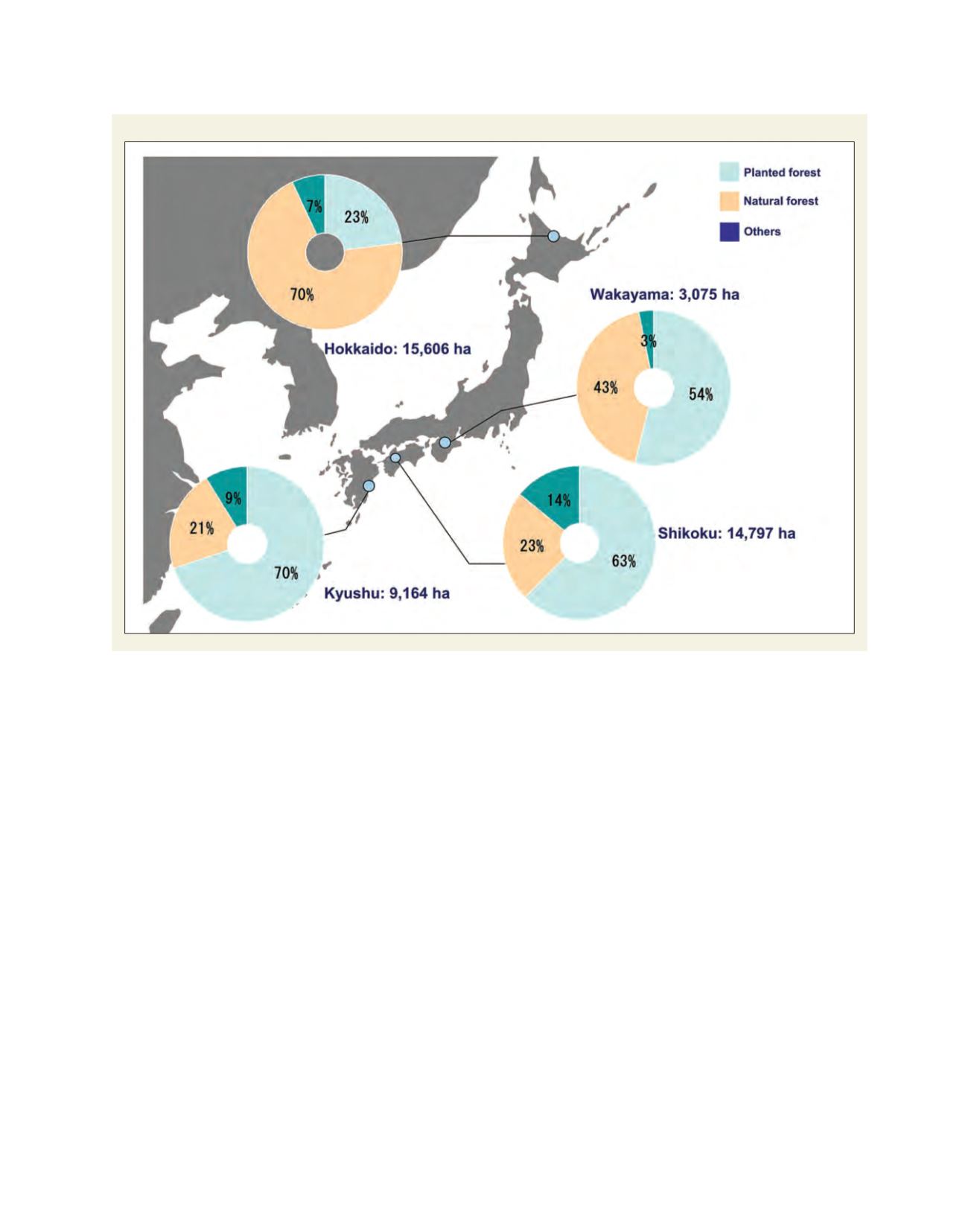

[
] 155
purposes. For the next 20 years, a considerable amount
of the species was planted successfully.
During the same time period (1950s to 1970s),
Sumitomo Forestry also planted Japanese cedar in one
of its forest lands in Kyushu, the southernmost island
of Japan, where the area’s warm climate allows rela-
tively faster tree growth. Today, this species accounts
for approximately 70 per cent of the company-owned
forest lands in Kyushu. In Hokkaido, larch was also
the species selected by Sumitomo Forestry, but with a
different purpose: one-generation planting for marsh-
land soil improvement. Today, 2,000 hectares of the
15,000 hectares of company-owned forest lands are
planted with these trees.
Current status of sustainable forestry
Operational guidelines currently implemented include
efforts to maintain and increase forest resources, envi-
ronmental preservation, effective and continuous use
of timber resources, and sustainable forest management
for continued profitability. Methods include zoning
based on tree growth, value and efficiency, reviewing
existing zoning to incorporate actual forest situations,
classification into the two major categories of economic
forests and environmental forests, and a shift from
forests are much bigger. In terms of the quality of forest land
management, however, we take pride in the fact that ours are of
the highest quality.
When World War II ended in 1945, Japan was in the midst of
confusion and hardships socially and in the forestry management
sector. During the war, an enormous number of trees had been cut
down to be burned as fuel and to be used for building or other
purposes. Many forests had been destroyed, with denuded slopes left
behind. This increased the risk of natural disasters caused by land-
slides and floods. Timber harvesting continued or even increased,
however, pressed by the ever-stronger demand during the post-war
reconstruction era.
To address the situation, in 1950 the Japanese Government
enacted temporary measures for reforestation, together with other
political measures. As the demand for lumber continued to exceed
the supply, private forest landowners saw a great deal of value
in planting softwood, such as Sugi (Japanese cedar) and Hinoki
(Japanese cypress). There were two peak years of the post-war
tree-planting rush in 1954 and 1961, and one million hectares of
previously cleared timber lands were restored in 10 years.
In Hokkaido, the northernmost island of Japan, where not much
planted timber existed in the past, forest owners began to look for
species that would make more economic sense than native fir or
spruce, and selected Karamatsu (larch), a species indigenous to
mountainous areas in Honshu Mainland Island, for forestation
Total area of Sumitomo Forestry’s forests: 42,642 hectares (1/900 of the area of Japan)
Source: Sumitomo Forestry
















